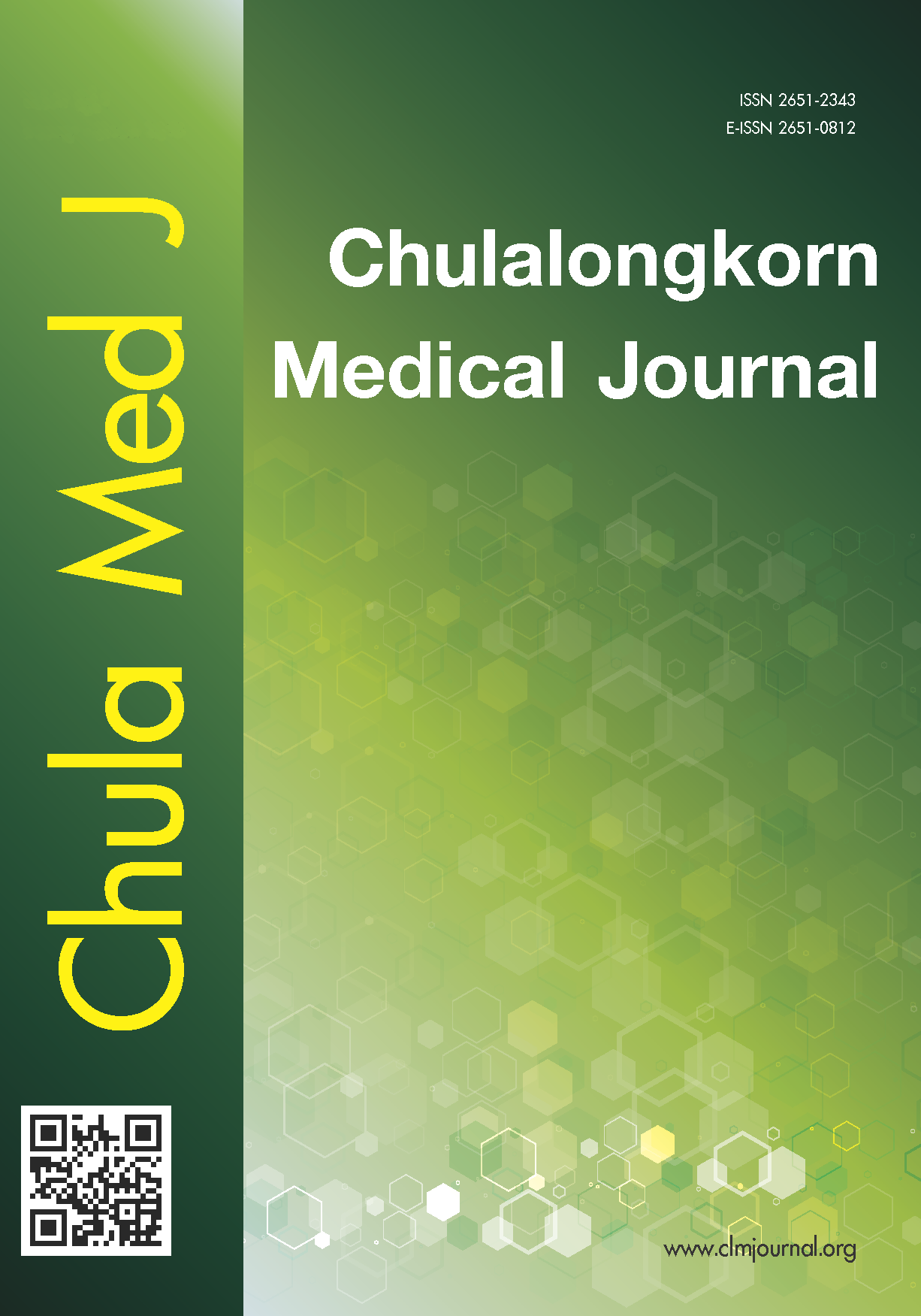Characteristics and physical outcomes of kratom users at a substance abuse treatment center
Main Article Content
Abstract
Background: Despite many disadvantages such as physical and mental disorders, family disruption, crime, etc., substance use disorder is continuously reported worldwide. Twenty - nine million people were reported to suffer from substance abuse. In addition, the survey found that only 1/6 of substance abusers throughout the world were able to access medical services. Kratom (Mitragyna speciosa Korth) has been used not only as medicine, but also as psychedelic drug for a long time.
Objective: To study behavioral and physical consequences of kratom use.
Methods: One hundred and six kratom users were recruited into this study at the Princess Mother National
Institute on Drug Abuse Treatment (PMNIDAT). Collected data included
1) general information,
2) kratom use profile,
3) side effects from using kratom,
4) Naranjo’s algorithm, and
5) Semi-structured
Assessment for Drug Dependence and Alcoholism (SSADDA) Section H. Statistics used to analyze these data were percentage, mean, standard deviation, independent t-test, Chi-square test, and Pearson’s correlation.
Results: Kratom use was classified as either boiling (55.6%) or chewing (41.7%). A number of kratom users often took other substances. Although the boiling-pattern group took more other drugs, the chewing-pattern group significantly had more headaches, arthritis, nausea, or constipation when compared to the other.
Conclusion: Kratom substance users frequently use other substances. There are multiple adverse effects from
both patterns of kratom use.
